Venzone Italy / Italia
- Maria Scuor
- Sep 16, 2024
- 7 min read
Italiano sotto ogni sezione
After our visit in Prossenicco we spent a morning in Venzone or Venҫon in Friulian about 19 km north of Udine. It is an Italian municipality of 1,941 inhabitants in Undine, Friuli-Venezia-Gulia. It sits in the valley of the Tagliamento River, separating the Julian Alps on the East and Carnic Alps on the west.
The first time we see the name Venzone documented is in a diploma from emperor Otto III in 1001. It was Glizoio di Mels, the lord in 1258 that constructed the fortification which included 8 meters high double walls, surrounded by a deep moat and anchored to 15 towers in a hexagonal shape with unequal side.
Like all towns in Italy, it too changed many ownerships throughout the centuries. In 1866, after the third war of independence and plebiscitary vote, the town was united with Italy. Because the advanced age of the buildings in Venzone that hadn’t suffered any damage during the two world wars, the town was proclaimed a national monument, in 1965 by the Ministry of Education.
However, shorty after in 1976 two massive earthquakes hit Friuli that almost entirely destroyed the town, killing 47 of its people. More on the earthquakes can be found on my Friuli Earthquakes of 1976 – Terremoti del Friuli del 1976 Blog.
Here is a TikTok video and photos of the historic centre - Ecco un video TikTok e le foto del centro storico
Dopo la nostra visita a Prossenicco abbiamo trascorso una mattinata a Venzone, o Venҫon in friulano, a circa 19 km a nord di Udine. E' un comune italiano di 1.941 abitanti della Provincia delle Undine, in Friuli-Venezia-Gulia. Si trova nella valle del fiume Tagliamento, che separa le Alpi Giulie a est e le Alpi Carniche a ovest.
La prima volta che vediamo il nome Venzone documentato è in un diploma dell'imperatore Ottone III nel 1001. Fu Glizoio di Mels, signore che nel 1258 costruì la fortificazione che comprendeva una doppia cinta muraria alta 8 metri, circondata da un profondo fossato e ancorata a 15 torri di forma esagonale con lato diseguale.
Come tutte le città d'Italia, anche questa ha cambiato molte proprietà nel corso dei secoli. Nel 1866, dopo la terza guerra d'indipendenza e il voto plebiscitario, la città fu unita all'Italia. A causa dell'età avanzata degli edifici di Venzone, che non avevano subito danni durante le due guerre mondiali, la città è stata proclamata monumento nazionale, nel 1965 dal Ministero della Pubblica Istruzione.
Tuttavia, poco dopo, nel 1976, due forti terremoti colpirono il Friuli che distrussero quasi interamente la città, uccidendo 47 dei suoi abitanti. Maggiori informazioni sui terremoti si possono trovare nel mio Blog Terremoti del Friuli del 1976 – Terremoti del Friuli del 1976.
Venzone Cathedral – Duomo di Venzone
The church of Sant’Andrea Apostolo is the cathedral as well as the parish church of Venzone. Based on findings discovered near the main façade, there was a small church that dates back to the 6th century. It was then enlarged by Glizoio di Mels in 1251, rebuilt in the 14th century and consecrated on August 2nd, 1338.
The cathedral was completely destroyed by the 1976 earthquakes and rebuilt between 1988 and 1995 by anastylosis, a technique in which the original pieces of a destroyed building are put back together, element by element.
The exterior is divided into polygonal apses and reinforced at the corners by buttresses culminating in pyramidal cusps and statues. There are three portals in which the northern one dates back to 1308 and has a lunette depicting Christ blessing. On the base of the main portal there is a Crucifixion dating back to the 14th century. As do the statues and reliefs that decorate the exterior.
The original bell tower was destroyed during the earthquake and only the second bell that dates back to 1962 was saved. The Capanni company recast the three other bells in 1993 and the current tower holds the four bells in the Lydian scale of B2, mounted with a Friulian pitch.
The interior has a Latin cross plan with a single nave, a large transept, triumphal arches of the three apses which are flanked by two towers. There are several important frescoes that date back to the 14th century. The baptismal font the two holy water stoups and the tombstone of the Antonini family, works by Bernardino da Bissone and date back to the 16th century. n the right apse there is a stone Vesperbild from the 15th century.
Here is a TikTok video of the Cathedral and the Mummies of Venzone - Ecco un video TikTok del Duomo e delle Mummie di Venzone
Here are external photos of the Venzone Cathedral - Ecco le foto esterne del Duomo di Venzone
Here are internal photos of the Venzone Cathedral - Ecco le foto interne del Duomo di Venzone
Duomo di Venzone
La chiesa di Sant'Andrea Apostolo è la cattedrale nonché la chiesa parrocchiale di Venzone. Sulla base dei ritrovamenti scoperti vicino alla facciata principale, c'era una piccola chiesa che risale al VI secolo. Fu poi ampliata dal Glizoio di Mels nel 1251, ricostruita nel XIV secolo e consacrata il 2 agosto 1338.
La cattedrale è stata completamente distrutta dai terremoti del 1976 e ricostruita tra il 1988 e il 1995 con l'anastilosi, una tecnica in cui i pezzi originali di un edificio distrutto vengono rimessi insieme, elemento per elemento.
L'esterno è diviso in absidi poligonali e rinforzato agli angoli da contrafforti culminanti in cuspidi piramidali e statue. Ci sono tre portali di cui quello settentrionale risale al 1308 e presenta una lunetta raffigurante Cristo benedicente. Sulla base del portale principale si trova una Crocifissione risalente al XIV secolo. Così come le statue e i rilievi che decorano l'esterno.
Il campanile originale era distrutto durante il terremoto e si è salvata solo la seconda campana che risale al 1962. La ditta Capanni ha rifuso le altre tre campane nel 1993 e l'attuale torre ospita le quattro campane della scala lidia di B2, montate con passo friulano.
L'interno è a croce latina a navata unica, ampio transetto, archi trionfali delle tre absidi a cui sono affiancate due torri. Ci sono diversi importanti affreschi che risalgono al XIV secolo. Il fonte battesimale, le due acquasantiere e la lapide della famiglia Antonini, opere di Bernardino da Bissone risalgono al XVI secolo. Nell'abside destra si trova un Vesperbild in pietra del XV secolo.
Mummies of Venzone – Mummie di Venzone
Workers discovered Venzone’s first mummy in 1647 in a 14th century tomb below the cathedral when they were there to increase the cathedrals size. Archaeologists estimate this mummy dates back to 1338. He probably died between 45 – 60 years of age and had a hunched back, therefore was nicknamed “The Hunchback”. According to ancient-origins, the workers left the mummy there as they had no way of exhuming it to analyze it.
Additional mummies for a total of 42, were discovered in the following decades and none were exhumed until 1845, when trained archaeologists moved them from the crypt to the upper chapel. Some were taken to Padova, Vienna and Paris for further analysis.
Analysis determined the mummification happened within the first year of burial. They had little to no decay, no fluids and had dry, papery skin. It is still a mystery how they were so well preserved. The most likely hypothesis is due to a perfect accidental combination of several natural elements, including temperature, humidity, a high presence of calcium sulphate in the soil, and the presence of a Hypha bombycina fungus that has great water-draining capacity caused the perfect environment for the mummification.
After the 1976 earthquake, only 15 of 42 mummies were extracted from the rubble. Five of them (including the nobleman from Venzone Paolo Marpillero) are exhibited in the crypt of the baptistery of San Michele and represent a heritage of anthropological interest for understanding the way of life of the Friulian inhabitants of past centuries.
Above is the video of the mummies included in the Cathedral video. It truly is amazing how you can see every feature of these mummies and they weight between 22 and 44 pounds. We can view five bodies in glass cases in the Crypt of the Cemetery Chapel of Saint Michael, on the same property of the Cathedral. It costs 2 euros to enter.
Here are photos of the mummies - Ecco le foto delle mummie
Mummie di Venzone
Gli operai scoprirono la prima mummia di Venzone nel 1647 in una tomba del XIV secolo sotto la cattedrale, quando erano lì per aumentare le dimensioni della cattedrale. Gli archeologi stimano che questa mummia risalga al 1338. Probabilmente morì tra i 45 e i 60 anni e aveva la schiena curva, quindi fu soprannominato "Gobbo di Venzone". Secondo le origini antiche, gli gli operai hanno lasciato la mummia in quanto non avevano modo di riesumarla per analizzarla.
Altre mummie, per un totale di 42, furono scoperte nei decenni successivi e nessuna fu riesumata fino al 1845, quando archeologi addestrati le spostarono dalla cripta alla cappella superiore. Alcuni sono stati portati a Padova, Vienna e Parigi per ulteriori analisi.
L'analisi ha determinato che la mummificazione è avvenuta entro il primo anno dalla sepoltura. Avevano poca o nessuna carie, nessun liquido e avevano la pelle secca e cartacea. È ancora un mistero come fossero così ben conservati. L'ipotesi più probabile è dovuta ad una perfetta combinazione accidentale di diversi elementi naturali, tra cui la temperatura, l'umidità, un'elevata presenza di solfato di calcio nel terreno e la presenza di un fungo Hypha bombycina che ha una grande capacità drenante dell'acqua hanno causato l'ambiente perfetto per la mummificazione.
Dopo il terremoto del 1976, solo 15 delle 42 mummie sono state estratte dalle macerie. Cinque di essi (tra cui il nobile venzonese Paolo Marpillero) sono esposti nella cripta del battistero di San Michele e rappresentano un patrimonio di interesse antropologico per comprendere il modo di vivere degli abitanti friulani dei secoli passati
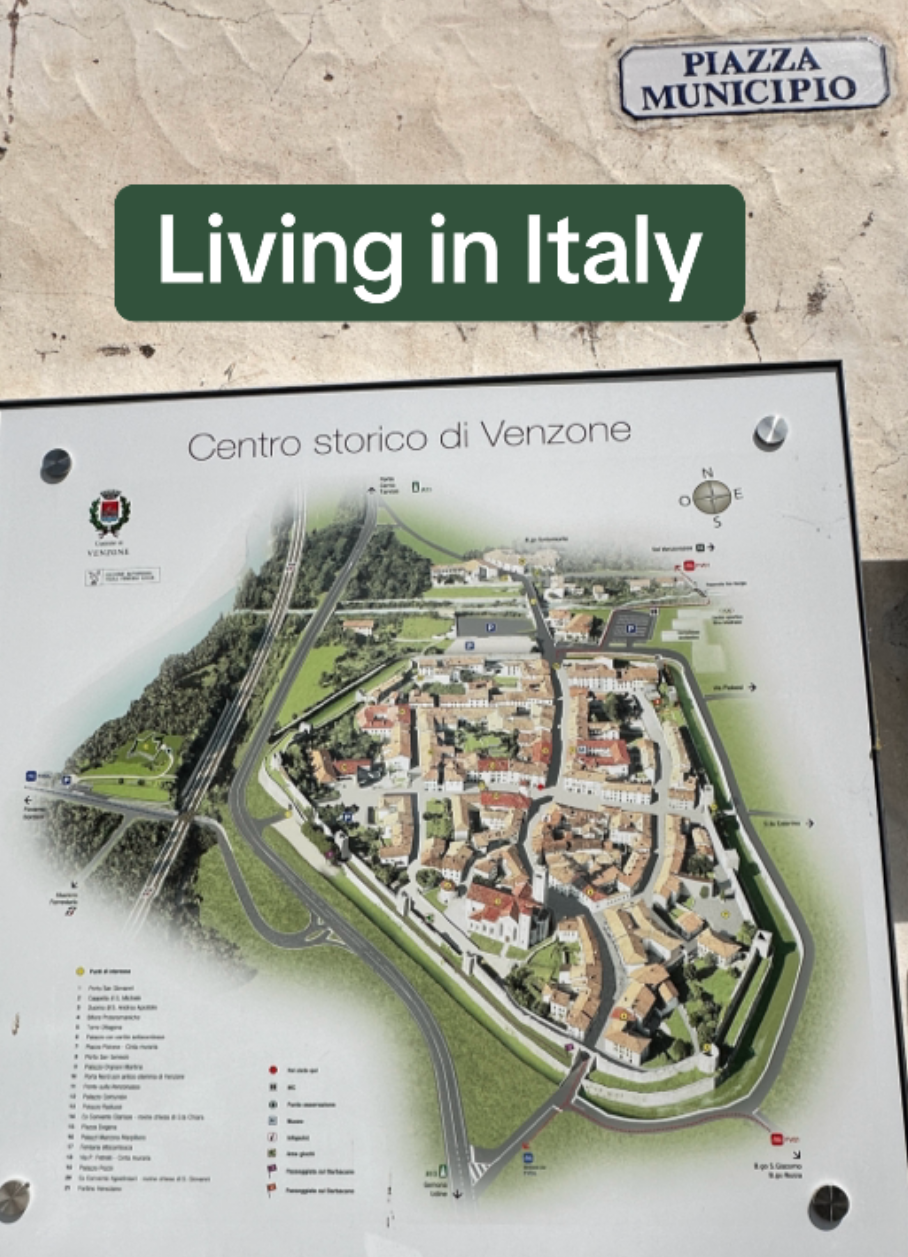











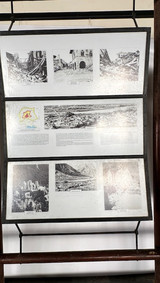


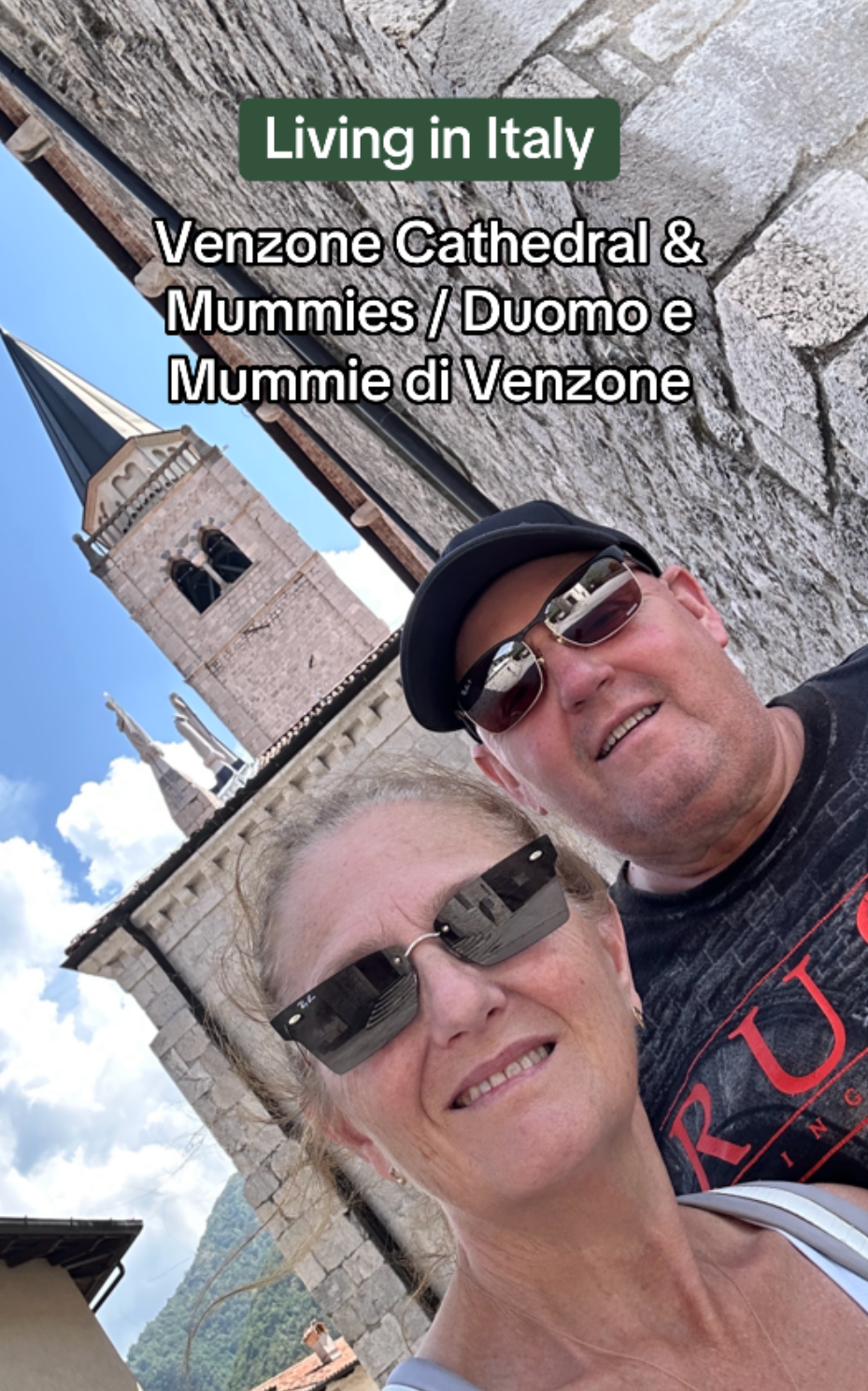







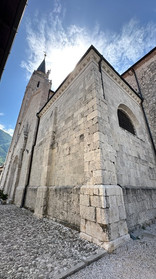

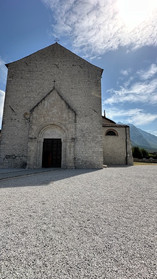

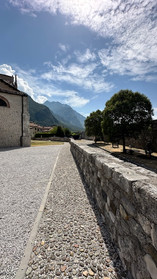
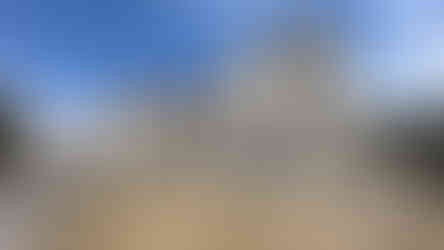
































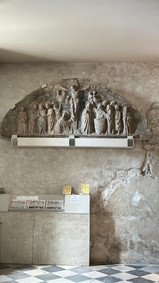



























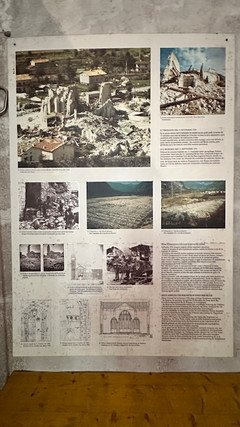





















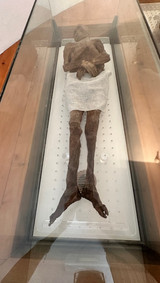



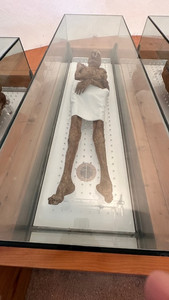

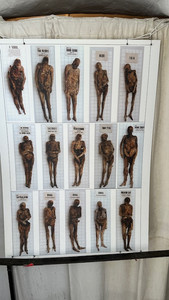
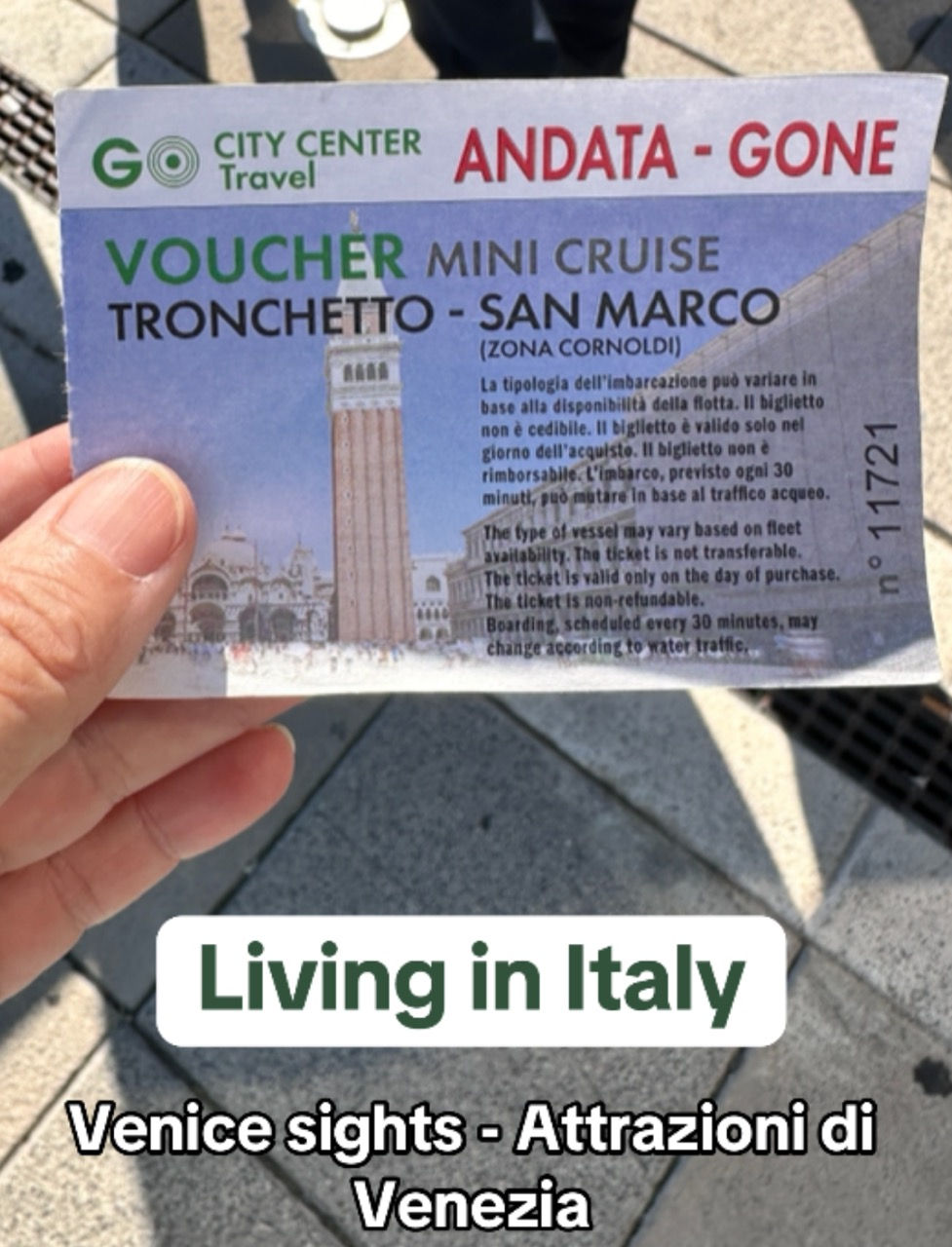


Comments